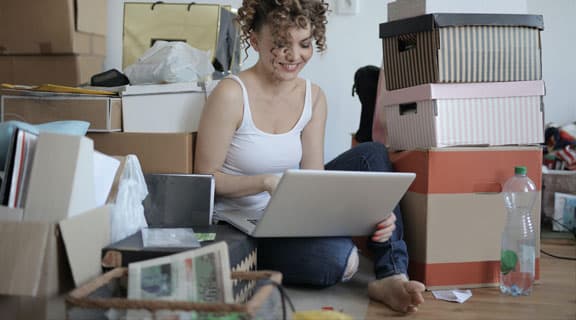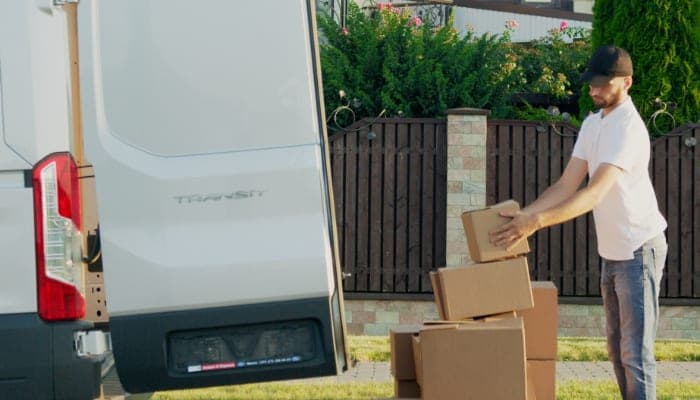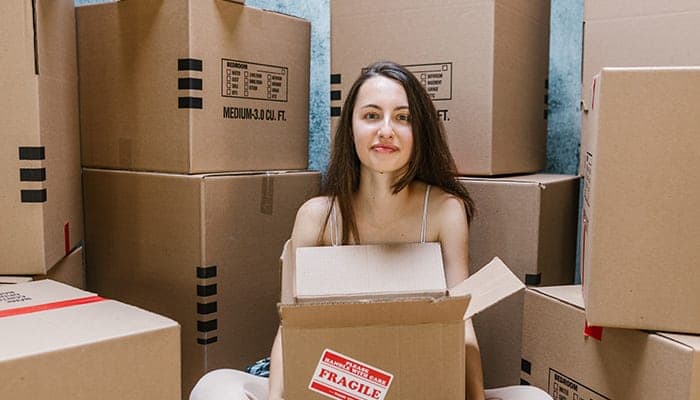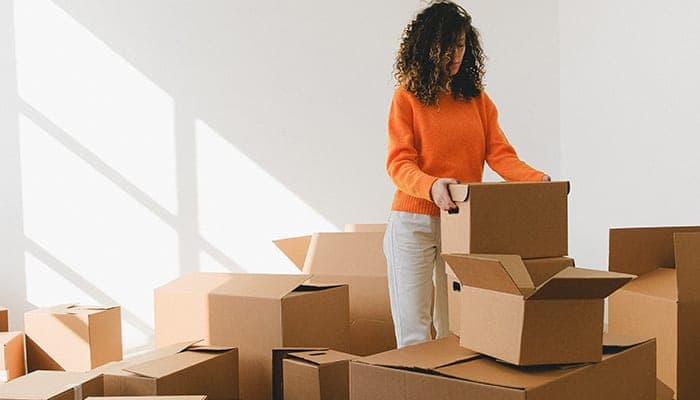So you want to use a self storage facility but you’re not sure which one? The bad news is it could be quite a tricky decision, but the good news is you’ve come to the right place to find the answer.

Our Blog
Useful Tips For Choosing A Self Storage Facility

Why Use Self Storage
There could be numerous reasons why you need to put a load of your possessions in safe and secure storage, from being stuck in a chain when you’re moving house to renovating the back bedroom. Maybe you’ve started following one of those Instagram influencers who tell you to de-clutter, but you can’t bear to throw out your collection of ceramic owls just yet. It doesn’t have to be ceramic owls, it could be suits of armour or vintage sewing machines, we’re sure you get the idea.
On a more serious note, the need for self storage often tends to coincide with major life events. According to research carried out by the Investment Property Forum the requirement for self storage is often driven by what they term ‘The Four D’s’ – downsizing, dislocation (i.e. moving home), death and divorce. At times like these you’ve got a lot to think about, to put it mildly, and finding self storage really needs to be as quick and simple as possible. What you don’t want to end up doing, however, is feeling forced to take the first self storage option you manage to find, because, as with any other industry, standards, prices and service levels can vary wildly.
A Definition Of Self Storage
One of the issues facing the average person who finds themselves needing to access self storage is that in the UK, self storage is not a regulated industry. A European Standard for self storage does exist, but it was created over a decade ago and has been rendered a bit obsolete by the rise of storage solutions such as mobile storage, peer to peer storage, valet storage and trade counters. Don’t worry, you don’t have to know what all of these are, you just have to trust us to explain exactly what you need when you access self storage. The good news is that the Self Storage Association UK (SSAUK) – a trade association for the self storage industry – has created a definition of a self storage unit as follows:
A self storage unit is a securable static space less than 500 square feet in size that is to be used by a person or business for the storage of their goods. The customer will have exclusive and ready access to the space. Ready access means the ability to access the unit at will during normal office hours without intervention. It is not intended that the unit be used as a workspace, trade counter or place where business activities other than storage or storage related activities take place. Storage related activities would include goods receiving, dispatch and packing that involve the goods in storage. This unit would be rented under a self storage contract that was not part of, or tied to, an additional agreement such as a residential tenancy, office space, workspace or similar.

What’s most useful about this definition is that it allows the SSAUK to publish statistics on the size of the self storage industry in the UK, highlighting the wealth of choice available to the ordinary person when they decide they need to access self storage services. According to the latest SSAUK annual report into the self storage industry – published in 2022 – there are no fewer than 2050 self storage stores in the UK, spread across more than 1015 different brands. Altogether, this adds up to approximately 52 million square feet of self storage in the UK, with the average size of each facility being 25,366 square feet. As recently as 2020, 82.3% of the available storage space in the UK was occupied, with domestic customers taking up 81% of the space being let.
Choosing the ideal facility for your needs out of all that space, particularly if you’re new to the concept of self storage, is going to present something of a challenge, so you really have to know what you’re looking out for. What we try to do, as providers of self storage for rent, is boil those requirements down to three basic headings – security, accessibility and ease of use. When you start looking for a self storage unit ask yourself whether your possessions will be safe, how long it will take you to travel to the unit when you need to add to or remove your possessions, and how easy it will be to do so once you’re on site.
Location
As we’ve pointed out, there’s a good chance you’ll need to make use of self storage during a pretty busy period of your life. Whether you’re moving house, renovating part of your home or storing items until a divorce settlement determines who gets what, the last thing you want is for the self storage process to take up any more time than is strictly necessary. That’s why you need to look for a facility which is located within easy travelling distance of major transport links such as motorway junctions. Go2Storage, for example, is located right next to junction 17 of the M5. This puts us in the ideal position for anyone in Bristol, Avonmouth, Filton, Almondsbury and the surrounding area. Once you start moving stuff into self storage, travelling back and forth with multiple loads or taking stuff back out as and when it becomes needed, the last thing you want is to be dealing with a long commute so look for a facility which is close to main roads. In our case, as well as being directly adjacent to the M5, we’re close to the M49 and the M4, making for a quick and convenient choice.
The Size Of The Unit
Most facilities offer storage units in a range of sizes, so it’s important to figure out exactly how much space you’re going to need before signing any rental agreement. You don’t want to be paying for lots of empty storage space that you don’t need, but at the same time you don’t want to end up having to take some stuff back home with you, or cram items into storage in a way which could be dangerous or could damage those items. It could feel quite overwhelming to be faced with multiple different options given in square feet and have to relate these measurements to a van load of items which used to be scattered around your house. If you’re given measurements in terms of floor space, make sure you find out how high the ‘ceiling’ of the unit is, and if you’ve got large individual items to store, such as furniture, make sure that the walls or ceiling aren’t sloping in nature.
According to the SSAUK, the average unit size is 69 square feet, and if that still doesn’t mean very much then rest assured we’ve made things easier by equipping our website with a size calculator. This handy gizmo lets you enter the items you want to store room by room, from two and three seater sofas to washing machines, dining tables and TVs, together with the dimension of each object. If you’re clearing the clutter of smaller items then you can enter the boxes you’ll use into the calculator, and it even works with calculations of the space needed to store miscellaneous items such as a bicycle, a lawnmower, a surfboard, a piano and even an arcade game. Give the calculator the details of everything you want to store, and it will work out exactly how much space you’re going to need.

One handy tip for anyone storing a lot of stuff – such as the entire contents of a house – is to consider renting two smaller units rather than one large unit. The reason for this is that it’s highly likely that at some time while you’re storing items you’ll need to access them, and that the one thing you need to access is absolutely bound to be located right at the back of a large storage space crammed with furniture and other items. There’s no scientific proof for this, but you just know it’s going to happen, and two smaller spaces will leave you with less stuff to shift out of the way.
The Building
As well as the individual storage unit itself you should think about the condition of the wider building. Larger commercial buildings can sometimes suffer from high humidity, so you should ask if this is a problem and if humidity levels are actually monitored. At the same time, leaks from outside can introduce moisture into a storage space, and the only way to stop this happening is through a regular programme of maintenance. Is the outside of the building maintained regularly, with things such as the roof being checked and repaired if needed and gutters being cleared to avoid the run-off of excess rainwater? Make sure you find out.
Security
Many people renting self storage for the first time will worry about security more than almost anything else. After all, you’re leaving your highly valued and sometimes even treasured items in a remote unit and trusting that they’ll be safe, bearing in mind that lots of strangers will also have access to the rest of the site in general. The minimum you should expect if for there to be CCTV coverage of the storage units and secure locks on each individual unit. The CCTV system should be in operation around the clock, 365 days of the year, and should cover the individual units themselves as well as public areas such as the entrance foyer and access corridors. In the past, the locks on each unit might have taken the form of a hefty padlock, but they are now likely to be electronic locks requiring something like a pin number or app to access the unit. Ideally, as well as state of the art security cameras your self storage facility should boast motion detecting alarms so there’s no chance of an intruder going undetected, and any electronic locks should be completely tamper-proof.
Some facilities may be staffed with personnel, monitoring who enters and leaves the facility but there are two reasons why this isn’t a complete security solution. The first is that personnel such as receptionists are unlikely to be in place 24 hours per day, and won’t track every visitor to see which unit they visit, and the second is that the more modern facilities are based around automated access to the units rather than relying on having to meet and greet clients.
As well as the peace of mind of decent security, ask if the self storage facility provides insurance if the worst should happen. Check the details of any in-house policy carefully to see if it’s worth taking out, or whether you should look at insuring your items yourself. A facility which provides comprehensive security at a fair price is just doing one more thing to make your life – and your decision to use self storage – simpler.

Pricing
If you’re accessing self storage for the first time then the temptation might be to simply opt for the cheapest deal on offer, but this would be a mistake. The company providing the storage may only be able to provide such a ‘bargain’ price because they’ve cut corners on things such as maintenance of the building, the security provision and the ease with which you can access your items. Think about the deal being offered by the storage facility in the round – weighing up aspects such as the amount of storage, the convenience of the location, how safe you think your items will be and how easy it will be for you to access your stuff whenever you need it. Rather than asking yourself if you’re getting a bargain, ask if the self storage in question offers value for money. Don’t be overly impressed by any introductory deals being offered, since you may take out storage at what seems like a very attractive price only to find yourself – and this is often the case – needing that storage for much longer than you first thought you would. In the meantime, the introductory price has lapsed and you find yourself paying much more than you intended to. Of course, you could simply move to another facility offering a tasty introductory deal, but that goes against the idea of convenience and ease of use that self storage is meant to offer. A far better bet is to find what you think is a fair weekly or monthly price for the self storage being provided and pay that for as long as you need to.
Access
How easy will it be to access your items once you’ve put them in self storage? It may be tempting to assume that once you’ve loaded your self storage unit you can forget about the contents for weeks and months, until you find a new flat/finish building your extension/move into your new home. Life often doesn’t work like that, however, so you need to ask yourself what will happen if you want to get hold of something – maybe some paperwork in a cupboard drawer for example – and it’s outside office hours? At Go2Storage we offer a fully automated service, which means that you can access your items 24 hours a day, 365 days per year, just using your app. The fact that you don’t need to sign in or out, talk to a receptionist or wait until the facility opens after the weekend maximises the convenience of self storage, whether you’re storing a few items for a couple of weeks, or the contents of a house for several years.
Everything we’ve mentioned above needs to be considered when choosing your self storage solution. As well as providing security, access and a great location, Go2Storage utilises the power of automation to make arranging your self storage as simple as possible. Use the calculator to figure out the amount of space you need, choose a unit, pay and get your unique code in a matter of minutes. From that moment on, you’re completely in charge.